Journal of Clinical & Experimental Dermatology Research
Open Access
ISSN: 2155-9554
ISSN: 2155-9554
Review Article - (2023)Volume 14, Issue 4
Aim: Anthropometric study of facial proportions in Indian normal population and compare to the proportions in Caucasian population
Objectives
Methods: Beauty in itself has no certain definition and is merely a perception of belief brought on to the people through various social media that created a standard for facial proportions, which provided a sense of social acceptance among ordinary people.
The beauty of a person’s face is determined by the harmony of proportions, symmetry and asymmetry. Variation of beauty indeed lies in asymmetry. Ideal proportions are directly related to the so-called divine proportions and the most important value in relation to these proportions is 1:1.618. The purpose of this study is to evaluate with the use of anthropometric measurements in Indian volunteers which will give guideline in aesthetic and reconstructive procedures and will also show the differences in Indian and Caucasian population.
Anthropometric measurements; Reconstructive procedures; Caucasian population
The beauty of a person’s face is determined by the harmony of proportions, symmetry and asymmetry. Variation of beauty indeed lies in asymmetry. Proportions are directly related to the so-called divine proportions and the most important value in relation to these proportions is 1:1.618. The golden ratio also known as the divine proportion, were studied in Caucasian race and is considered by many to be the key to the secret of aesthetics, attraction and human beauty.
This prospective study was conducted at Padmashree D.Y. Patil University Medical College, Hospital and Research Centre, Nerul, Navi Mumbai.
Study design: Prospective Study duration: Two years Sample size: 200 volunteers
Approval of Institutional Ethics Committee was taken before start of the study. A written signed informed consent has been taken prior to enrolling the subject in the study. Amongst the faces found to be attractive, 25 photographs were taken with consent of the volunteer.
Eligibility criteria
Inclusion Criteria
• Indians of both genders between ages 18-30 years
• Volunteers from all ethnic races originally belonging to Indian origin
Exclusion Criteria
• Volunteers with previous defect or deformity
• Volunteers who have undergone prior surgical or orthodontic treatment
Patients’ demographic details were recorded such as age, gender, address, occupation, ethnic origin and previous facial surgery or orthodontic procedure done, if any, were recorded in a predesigned case record form. The study comprised two separate groups consisting of 100 males in one group and 100 females in the other group who were selected from the population of medical and dental students at DY Patil University.
Direct anthropometric measurements were made keeping the head position parallel to the ground using magnetic level finder.
Subjects were asked to sit in an upright position and made to look at a distant object.
Measurements were performed according to classical methods of physical anthropology using standard instruments, as shown, described by Farkas and Cheung.
Facial proportions were determined using the soft tissue and bony points for obtaining linear distances, which were measured as follows (Figures 1 and 2).
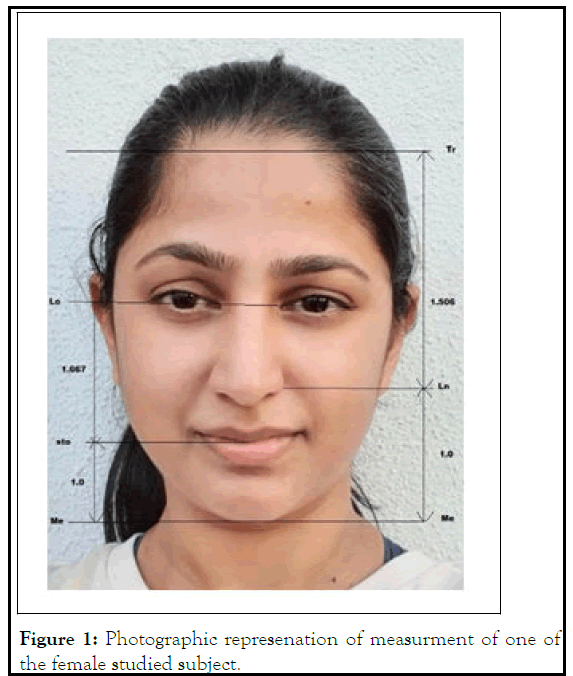
Figure 1: Photographic represenation of measurment of one of the female studied subject.
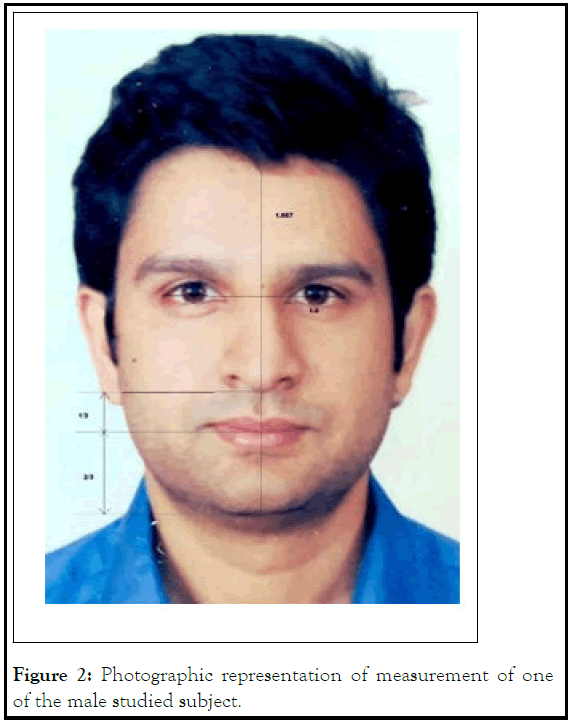
Figure 2: Photographic representation of measurement of one of the male studied subject.
The concept of beauty has been periodically changing through ages and will continue to do so for the rest of the tenure of the human beings on earth. All humans have similar features in the face. A face is beautiful and shows harmonious features if the individual components are proportional. This is what is referred to as facial balance. But, their proportions and relationships vary from one face to another within a group or race [1]. The knowledge of facial proportions is essential for a surgeon who will require facial analysis in facial reconstructive procedures. A pleasant and harmonious face can be a great asset to one’s social status and hence a therapist is held liable to shoulder the full responsibility of the overt alteration, desirable or undesirable, that may be produced because of aesthetic surgery.
According to the annual plastic surgery procedural statistics, there were 15.9 million surgical and minimally- invasive cosmetic procedures performed in the United States in 2015, a 2% increase over 2014 [8]. According to the American Society of Plastic Surgeons (ASPS) 2014 procedural statistics, the number of men having plastic surgery continues to rise. Male plastic surgery rates have significantly increased since 2000 and cosmetic procedures are no longer considered to be only for women. Cosmetic surgery has moved beyond just applying the same techniques used for females onto males. Men are seeking to regain a more youthful look, improve their self- image and feel better about their appearance [9].
Anthropometry
Knowledge of the absolute and relative variability in the size and shape of the human body is crucial to studies of human growth, population variation and clinical treatment, medico legal identification in forensics, reconstruction as well as in plastic surgery. Anthropometry (Greek: anthropos-”man “and metron-”measure” therefor“measurement of man”) refers to the measurement of the human individual. It refers to the systematic quantitative representation of the human body, specifically employing measurements of physical dimensions of living individuals and human remains. An early tool of physical anthropology, it has been used for identification, for the purposes of understanding human physical variation, in paleoanthropology and in various attempts to correlate physical with racial and psychological traits. Topinard defined the study of anthropometry as of the human body in order to determine their respective proportion not only at different ages, but also in the different races, so as to distinguish them and establish their relation to each other. Anthropometry is an art and science used extensively for measuring the soft tissue proportions. Anthropometric evolution begins with the identification of particular location on a subject called landmark point, defined in term of visible or palpable features (skin and bone) on the subject, followed by a series of measurements between these landmarks. Anthropometry, the measurement of living subjects was first developed by a German Anatomist Johnne Sigmund elsholtz for his doctoral thesis at the University of Padua in 1654.
Suggested that measurement of facial parameters is important to scientists and authorities, especially in case of missing persons or mistaken identities. The characteristics of the face can be used as a good identification method for the dead, missing and criminal, using both morphological features and measurements. The face can either be reconstructed (identifying the dead), superimposed or compared to facial photographs (mistaken identifies or missing persons) or for reconstruction surgeries after accidents.
Soft tissue points
Once the cephalometrics came into existence, more importance was given for the hard tissue relationship, and their correction. But soon it was realized that the correction of hard tissue alone does not bring about the desired results in many occasions (Figures 3 and 4). Soft tissue plays a major role in determining the final outcome of facial aesthetic surgical procedures [7].
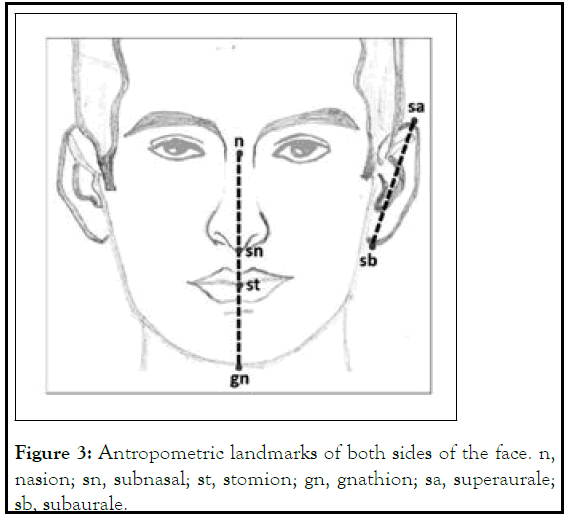
Figure 3: Antropometric landmarks of both sides of the face. n, nasion; sn, subnasal; st, stomion; gn, gnathion; sa, superaurale; sb, subaurale.
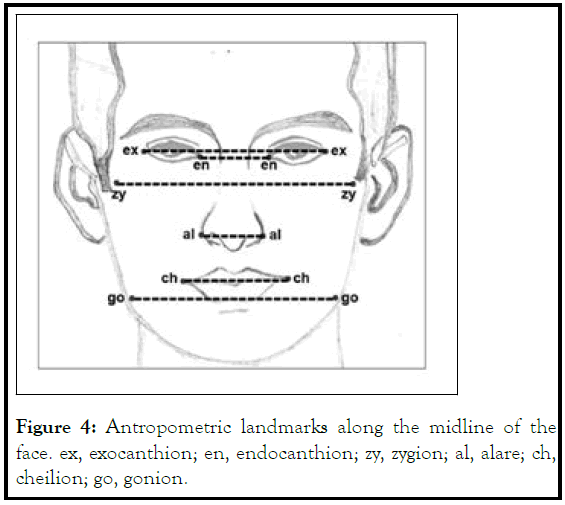
Figure 4: Antropometric landmarks along the midline of the face. ex, exocanthion; en, endocanthion; zy, zygion; al, alare; ch, cheilion; go, gonion.
• Alae of nose: Right and Left
• Alare (al): Most lateral point on each alar contour.
• Angles of mouth: Right and left
• Cheilion (ch): Corner of the mouth, i.e. point located at each labial commissure
• Endocanthion (en): Medial canthus of eye
• Exocanthion (ex): Lateral canthus of eye
• Glabella (Gl): Bony point at the junction of nasal and frontal bone
• Gnathion (gn): Lowest median landmark on the lower border of the mandible which is identified by palpation and is identical to the bony gnathion
• Gonion (go): Most lateral point on the mandibular angle close to the bony gonion. It is identified by palpation. If the angle is flat or if there is rich soft tissue cover, determination of this point is very difficult
• Labiale inferius (li): Midpoint of the vermilion line of the lower lip
• Lateral canthus (LC): Lateral canthus of the eye
• Lateral cheek (lchk): Lateral border of the cheeks
• Lateral nose (Ln): Lateral side of the nose
• Menton (Me): Lower most bony point on mandible
• Nasion (n): point in the midline of the nasal root and the nasofrontal suture. The slight ridge on which it is situated is felt by the observer’s fingernail. This point is always above the line that connects the inner canthi. The soft nasion and the bony nasion are identical
• Postaurale (pa): The most posterior point on the helix (outer rim of the ear)
• Stomion (sto): Midpoint of intralabial fissure
• Subnasale (sn or subN): Junctional point between columella and upper lip
• Tragion (t): Notch on the upper margin of the tragus.
• Trichion (Tr): Point marked on the forehead and the beginning of hairline
• Zygion (zy): Most lateral point of the zygomatic arch and is identified by trial measurement, not by anatomical relationship. It is identical to the bony zygion of the malar bones
Lengths of the face
• Ear Length (right)subaurale- superauralesa-sba
• Ear width (right)preaurale- postauralepra-pa
• Eye/Biocular width: the distance between the exocanthus and endocanthus on each side, exocanthion- exocanthion ex-ex
• Eye-Fissure Width (left)exocanthion-endocanthionex-en
• Eye-Fissure Width (right)exocanthion-endocanthionex-en
• Face breadth /Upper face Width: measured as the maximum distance between the most lateral points on the zygomatic arches (left zygion to right zygion) (zy-zy)
• Face Height (Tr-Me) or Total (physiognomic) face height (trgn): measured as the straight distance from the hair line (trichion) to the lowest point on the lower border of mandible in the mid-sagittal plane (gnathion)
• Face Width: lchk r-lchk l
• Intercanthal distance: the distance between two endocanthienen
• Ln-Tr: the outer edge of the nostril and highest point of the forehead
• Lower face depthtragion-gnathiont-gn
• Lower face height/ Mandibular height (st-gn): measured as the straight distance between the stomodium (st) and the gnathion (gn)
• Lower face widthgonion-goniongo-go
• Lower vermillion heightstomion-labiale inferiusst-li
• Mandibular width (go-go): measured as the maximum breadth of the lower jaw between two gonion points on the angles of mandibles (gonion is the most posterior, inferior and laterally situated point on the external angles of the mandible)
• Me-Ln: the lowest point on the chin and the outer edge of the nostril
• Me-sto: the lowest point on the chin and the point where the upper and lower lip merge
• Middle face depthtragion – subnasalet-sn
• Midface height one (n-st): the distance from the nasion (n) to the point mid-sagittal of the oral fissue
• Midface height two (g-sn): The distance in the median plane between the glabella and the subnasale
• Morphological face height (n-gn): measured as the straight distance from the nasal root (nasion) to the lowest point on the lower border of mandible in the mid-sagittal plane (gnathion)
• Mouth width: measured the width of the mouth as the distance between Cheilion points, cheilion-cheilionch-ch.
• Nose Length/Height: the distance from nasion to subnasale nasion-subnasale (n-sn)
• Nose Width: the distance between alae of a nose, alare-alarealal
• Protrusion of the nasalsubnasale-pronasalesn-prn
• Special Face Heightendocanthion-gnathionen-gn
• Special Upper Face Height glabella-subnasaleg-sn
• sto-LC: the point where the upper and lower lip merge and corner of the eye
• Total (physiognomic) face height (tr-gn): measured as the straight distance from the hair line (trichion) to the lowest point on the lower border of mandible in the mid-sagittal plane (gnathion)
• Upper face depthtragion–nasiont-n
• Upper face height one (tr-g): the distance between the hair line (trichion) and the midpoint of the supra-orbital margins (glabella)
• Upper face height two (tr-n): the distance from the hair line (trichion) to the point on the root of the nose where the midsaggital plane cuts the nasofrontal sutures (nasion)
• Upper vermillion heightlabiale süperius-stomionls-st
Division of the face
• The horizontal thirds of the face (Figure 5)
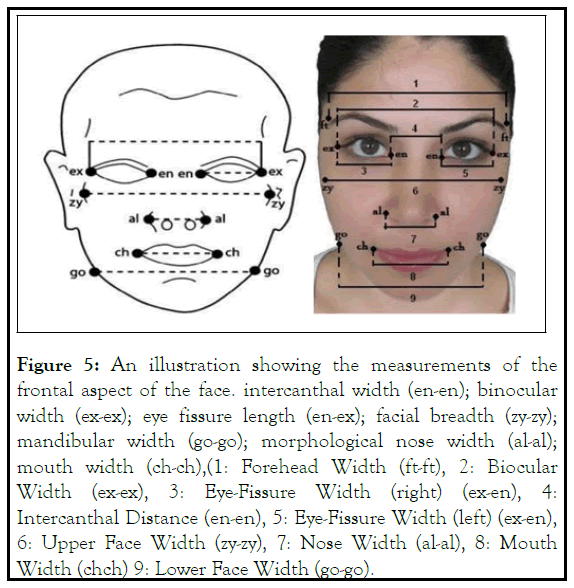
Figure 5: An illustration showing the measurements of the frontal aspect of the face. intercanthal width (en-en); binocular width (ex-ex); eye fissure length (en-ex); facial breadth (zy-zy); mandibular width (go-go); morphological nose width (al-al); mouth width (ch-ch),(1: Forehead Width (ft-ft), 2: Biocular Width (ex-ex), 3: Eye-Fissure Width (right) (ex-en), 4: Intercanthal Distance (en-en), 5: Eye-Fissure Width (left) (ex-en), 6: Upper Face Width (zy-zy), 7: Nose Width (al-al), 8: Mouth Width (chch) 9: Lower Face Width (go-go).
• Upper third: Trichion to Glabella
• Middle third or morphological facial height: Glabella to Subnasale
• Lower third or lower face height: Subnasale to Menton
• Vertical fifths of the face (Figure 6)
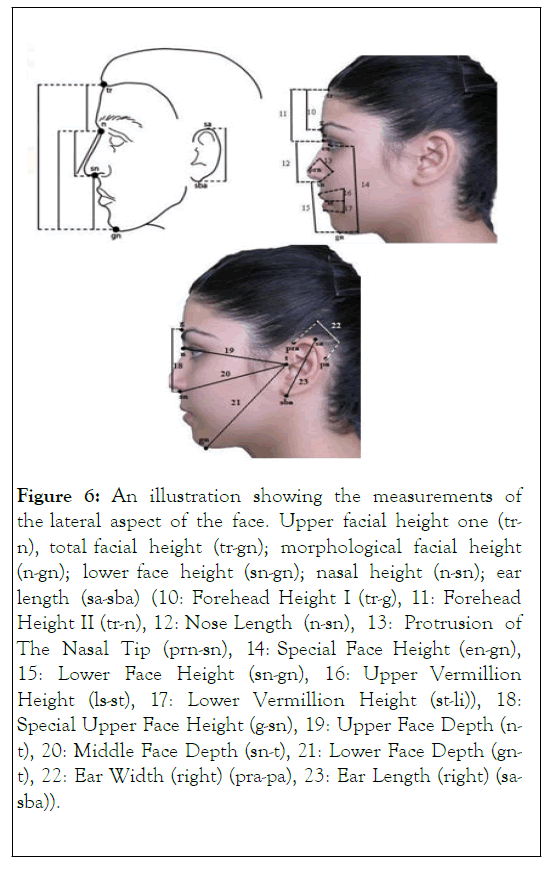
Figure 6: An illustration showing the measurements of the lateral aspect of the face. Upper facial height one (trn), total facial height (tr-gn); morphological facial height (n-gn); lower face height (sn-gn); nasal height (n-sn); ear length (sa-sba) (10: Forehead Height I (tr-g), 11: Forehead Height II (tr-n), 12: Nose Length (n-sn), 13: Protrusion of The Nasal Tip (prn-sn), 14: Special Face Height (en-gn), 15: Lower Face Height (sn-gn), 16: Upper Vermillion Height (ls-st), 17: Lower Vermillion Height (st-li)), 18: Special Upper Face Height (g-sn), 19: Upper Face Depth (nt), 20: Middle Face Depth (sn-t), 21: Lower Face Depth (gnt), 22: Ear Width (right) (pra-pa), 23: Ear Length (right) (sasba)).
• Right postaurale to right exocanthion
• Right exocanthion to right endocanthion
• Right endocanthion to left endocanthion
• Left endocanthion to left exocanthion
• Left exocanthion to left postaurale (Figure 7)
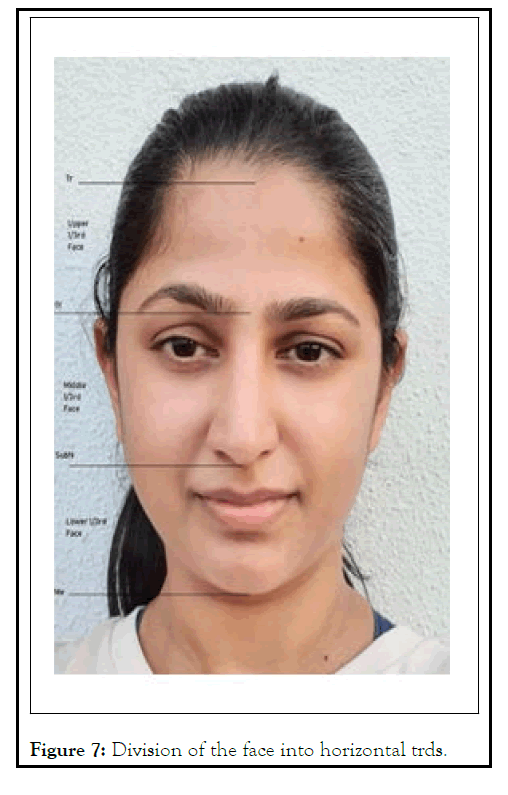
Figure 7: Division of the face into horizontal trds.
Golden ratio
The divine proportion has existed from all eternity in mathematics and in the physical universe, but precise information is not available as to when humankind first discovered and applied it [2]. Throughout history, it was most likely rediscovered many times. As per literature available, the knowledge of divine proportion exists since ancient Greek sculptor Phidias. Filius Bonacci, discoverer of the numerical value of the divine proportions, first scientifically described it. More relevant to the dental profession as well as the medical profession (such as plastic surgeons) are the divine proportions of the human face. The golden ratio, also known as the divine proportion, is considered by many to be the key to the secret of aesthetics, attraction, and human beauty [3]. It is expressed as the ratio of large and small and its value is ‘1.618’; that is, the smaller part is 62% of the size of the larger. It is a geometrical proportion in which, a line AB is divided at a point C in such a way that AB/AC=AC/CB. It is often symbolized using phi, after the 21st letter of the Greek alphabet. The golden ratio has been scientifically applied in various fields like prosthodontics, facial surgery, orthodontics, facial attractiveness study, and in the development of facial mask and dental grid system [3]. Jefferson [4] stated that any deviation of human face from golden proportion can result in the development of facial abnormalities and disorders. A study by Rossetti et al [5] showed that, the ratios between three dimensional facial distances were not related to attractiveness and most facial ratios were different from the golden ratio. In 1509, Luca Pacioli wrote a book that refers to the number as the “Divine Proportion,” which was illustrated by Leonardo da Vinci (Figure 9). Da Vinci later called this sectio aurea or the golden section. The golden ratio was used to achieve balance and beauty in many Renaissance paintings and sculptures. The golden ratio also appears in da Vinci’s Vitruvian Man and the Mona Lisa [4,5]. In orthodontics, Ricketts evaluated the divine proportion in relation to facial attractiveness for the first time and reported that facial esthetics should be based on a scientific basis rather than a personal perception basis [6,7]. Ricketts’s articles appear to be key publications in the fields of orthodontics and oral surgery for facial esthetics [8]. Since it is impossible to quantify and attribute beauty, various linear and angular measurements for measuring facial proportions were thought of. Because of the variations among gender and ethnic and racial groups, the use of proportional measurements for photographs is more useful for the study of facial esthetics compared to using absolute values in numerical facial analysis [9]. After marking and connecting points needed to obtain adequate lengths, measured parameters were compared with the ideal set of proportions (1:1.618) (Figure 8)
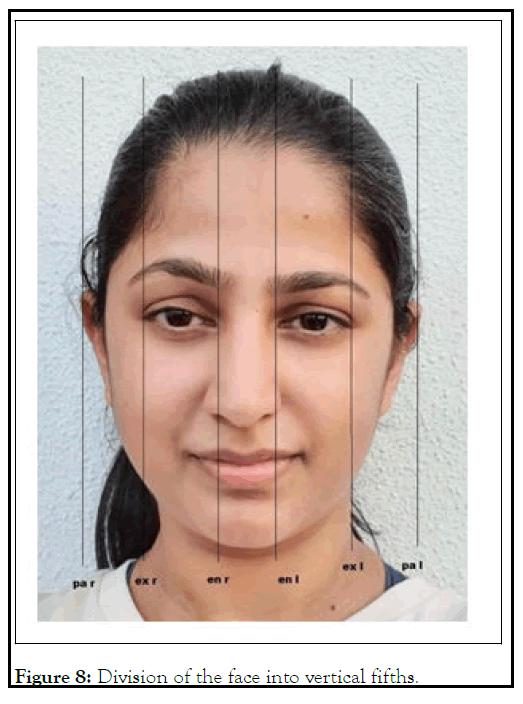
Figure 8: Division of the face into vertical fifths.
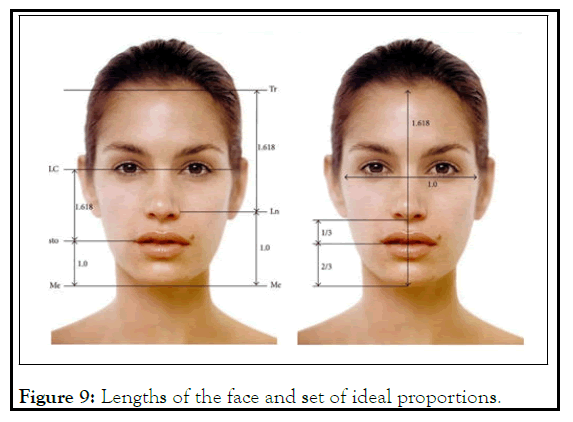
Figure 9: Lengths of the face and set of ideal proportions.
• The ratio lchk r-lchk l : Tr-Me is expected to be 1 : 1.618
• The ratio sto-Me : sto-LC is expected to be 1 : 1.618
• The ratio Me-Ln : Ln-Tr is expected to be 1 : 1.618
• The ratio subN-sto: subN- Me should be 1: 3, lower facial third index, that could also be shown in percentage (30:70%)
*This photo is a copyright and has been retrieved from the article of world journal
Indians would belong to the subgroup of Caucasoid called Indo- Dravidian (Indo-European). A few studies have been conducted on facial proportions in Indian populations in India [10-12]. A study performed by Sadacharan with 100 Indian American female faces dealt with facial proportions. Sadacharan performed anthropometric studies of horizontal thirds of the face and proportions of lowerface height and orbitofacial assessment in Indian Americans. However, there are no reports available on the facial proportions in Indian American men.
The study was undertaken to record the facial anthropometric measurement in a group of 200 healthy subjects (100 male and 100 female) of age group of 16–35 years belonging to similar ethenic background. Anthropometric studies are useful in quantitative comparison of anthropometric data with subjects, measurements before and after surgery that help in further planning and assessment in aesthetic surgery as well as in plastic and reconstructive procedures. The diversity of various measurements can also be made to use in criminological clinical, forensic anthropology and for scientific research.
Golden ratio
Medical professionals are now realizing that understanding the golden ratio can have a strong impact to achieve ideal human health. It is suggested that understanding golden ratio may improve human health problems particularly maxillofacial and respiratory problems. From the bone structures to internal organs, the golden ratio is expressed throughout in human body in innumerable ways. These examples are just the beginning of the endless number of ways the golden ratio governs our body, formation and functioning. Keeping in mind that face in particular, is the most expressive part of the human body, responsible for visual evaluation and recognition we carried out a study on facial morphology and applied golden ratio to the obtained quantitative data and classified the result in the form of different facial shapes. In our study, we found that the physiognomic facial height and facial width of the face were greater in males with significant sexual dimorphism in two groups. In the present study, we also found that males significantly deviate from the ideal golden ratio (golden faces) as compared to females. Saraswathin et al in a similar type of study also reported sexual dimorphism of face and found that males significantly deviate from the golden ratio as compared to females. Packiriswamy et al in their study of facial morphology, showed variations according to gender and race. Zhuang et al in their study of facial morphology among gender, ethnicity and age groups, reported statistically significant differences in facial anthropometric dimensions and suggested that respiratory equipment manufacturers can design various respiratory devices for supplying respiratory protective equipment to their employees. Mohammad et al in their study of multiracial facial golden ratio and evaluation of facial appearance reported that no significant association was found between golden ratios in their study stated that deviation from the standards (golden ratio) can result in the development of facial abnormalities and disorders. It is highly interesting that most of the ratios investigated in this study differ from the divine proportion. Similar conclusion was drawn by Akan et al [2]. One ratio in attractive subjects and the two ratios in nonattractive subjects were identical to the divine proportion. These results are compatible with those of previous studies, which could not find any similarity between attractive people’s ratios and the golden ratio. As opposed to our findings, Ricketts [7] and Kawakami et al, observed that the human face has several structures in the golden proportion relating to esthetic perception. Golden ratio is a simple method to identifying individuals having various types of faces in population which can help in early preventive measures to be taken to avoid respiratory, sleep and maxillofacial disorders so that the population may lead a healthy and normal life.
In our study most of the subjects had a ratio of 1:1.595 that deviated from the ideal golden ratios of 1:1.618 in Caucasian population. Although, the golden proportion is certainly a prominent and recurring theme in aesthetics, it is arbitrary and should not be embraced as the only method by which human beauty is measured to the exclusion of others factors.
There were significant variations in all facial anthropometric parameters between the male and female participants. The ratio we derived in Indian population was 1:595 which is different from the golden ratio that is 1:1.618 in Caucasian population.
• This database can be used as a reference for facial analyses that will be further useful as an essential guide to the researchers, anatomists, anthropologist, clinicians and forensic experts and to serve as a future framework in this field
• There were significant variations in all facial anthropometric parameters between the male and female participants
• In our study most of the subjects had a ratio of 1:1.595 that deviated from the ideal golden ratios of 1:1.618 in Caucasian population. Although, the golden proportion is certainly a prominent and recurring theme in aesthetics, it is arbitrary and should not be embraced as the only method by which human beauty is measured to the exclusion of others factors
• Females significantly deviate from the ideal golden ratio (golden faces) as compared to Males
• Hence we conclude that certain faces are attractive although they do not fit into the set of measurements of ideal proportions and is a guide for evolution in aesthetic and reconstructive procedures in Indian set up
• It is our view that, the differences of the investigated parameters could be the result of geographical and social factors, or it may be the result of migration and mixing of the population in Mumbai with different ethnic groups of our country
• These parameters can also be used as a guideline for reconstructive procedures performed in cases of congenital craniofacial, maxillofacial conditions as well as in cases of trauma
• We also derived that golden proportions are different for different races
[Crossref] [Google Scholar] [PubMed]
[Crossref] [Google Scholar] [PubMed]
[Crossref] [Google Scholar] [PubMed]
[Google Scholar] [PubMed]
[Crossref] [Google Scholar] [PubMed]
[Crossref] [Google Scholar] [PubMed]
[Crossref] [Google Scholar] [PubMed]
[Crossref] [Google Scholar] [PubMed]
[Crossref] [Google Scholar] [PubMed]
Citation: Agarwal AS, Abhyankar S, Juneja M, Borgaonkar A (2022) Anthropometric Facial Proportions in Indian Population Compared to Caucasian Population. J Clin Exp Dermatol Res. 13:044.
Received: 01-Jun-2023, Manuscript No. JCEDR-22-14425; Editor assigned: 05-Jun-2023, Pre QC No. JCEDR-22-14425(PQ); Reviewed: 19-Jun-2023, QC No. JCEDR-22-14425; Revised: 26-Jun-2023, Manuscript No. JCEDR-22-14425(R); Published: 05-Jul-2023 , DOI: 10.35841/2155-9554.23.14.639
Copyright: © 2022 Agarwal AS, et al. This is an open-access article distributed under the terms of the Creative Commons Attribution License, which permits unrestricted use, distribution, and reproduction in any medium, provided the original author and source are credited.